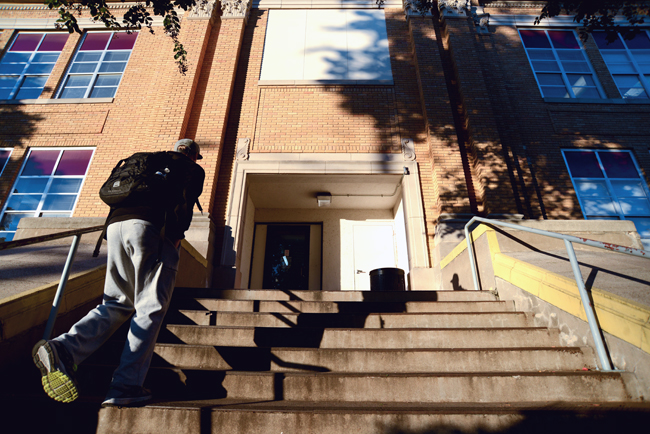Community college students undergo a fundamentally different experience from students who attend traditional universities; they are often older and must balance commitments to work and family. A study conducted by UT researchers investigates ways two-year institutions can better retain these students.
According to graduation statistics provided by Austin Community College, 4 percent of full-time students entering the college receive a certificate or degree by the end of four years. Earning an associate’s degree is expected to take two. According to UT, 52 percent of students entering the University graduate with a bachelor’s degree by the end of four years.
Kay McClenney, director of the Center for Community College Student Engagement, said that colleges can reverse this trend by actively engaging the students. McClenney refers to active engagement as the amount of time and effort that students give for purposeful educational activity.
The study found that a curriculum oriented toward active learning, collaboration and provision of supplemental education, along with mandatory attendance and advising, are found to improve student success.
“These types of educational practices need to be a typical practice instead of the experience of a fortunate few,” McClenney said. “The question isn’t funding; the question is, are colleges and universities going to insist that their faculty learn about these techniques and implement them more.”
The center released its most recent study, “A Matter of Degrees,” which seeks to help community college administrators achieve their goals by assessing the impact of various practices. It is the second entry in a three-part series.
McClenney said her research is based on data collected from surveys and focus groups, then interpreted to provide constructive advice for more than 900 community colleges across the country.
McClenney said the center works particularly closely with ACC, which would like to increase the amount of students who transfer to UT after receiving their associate’s degrees.
“There are efforts they are taking under their own operations and also through a partnership with UT,” McClenney said.
ACC student Koji Kiuchi said he hopes to eventually transfer to UT and double major in English and Japanese. Kiuchi said he has a difficult time making ends meet while also going to school full-time.
“My plan is to eventually transfer to UT, and go through financial aid and use that money to study abroad in Japan,” Kiuchi said.
McClenney said college administrators are in a novel situation because of demographic shifts in America.
“The nature of college-going students is changing because the nature of America is changing,” McClenney said. “For example, you have part-time students paying tuition while working a job or two or three. The thing to know is that students are far more likely to be from diverse backgrounds, to be people of color, to be working, to have families and to be commuting to school every day.”
McClenney said administrators need to adapt their curriculum to suit these changes.
“A lot of community colleges are designed as though they could be traditional institutions for higher education, where students are going to school full-time, and will start immediately after high school, and will go straight through to graduate,” McClenney said. “In fact, one in six graduates fits that description.”
Kiuchi said he is posed with the competing obligations of work and school.
“Trying to deal with the high cost of living in Austin while making shit-pay at a part-time job and also taking classes at the same time and trying to do well is hard,” Kiuchi said.




















